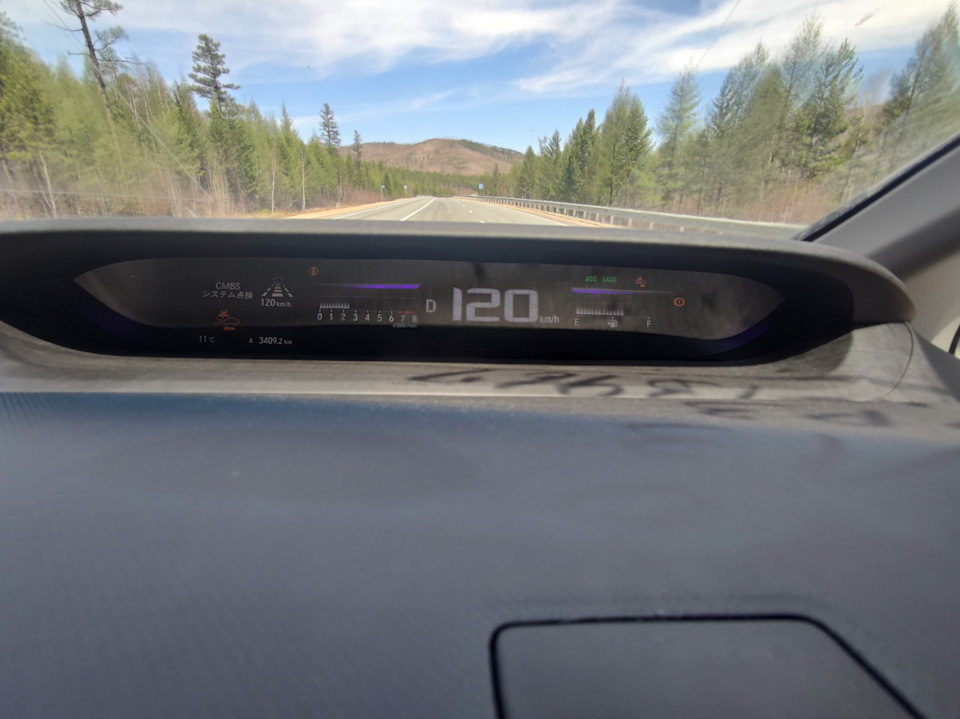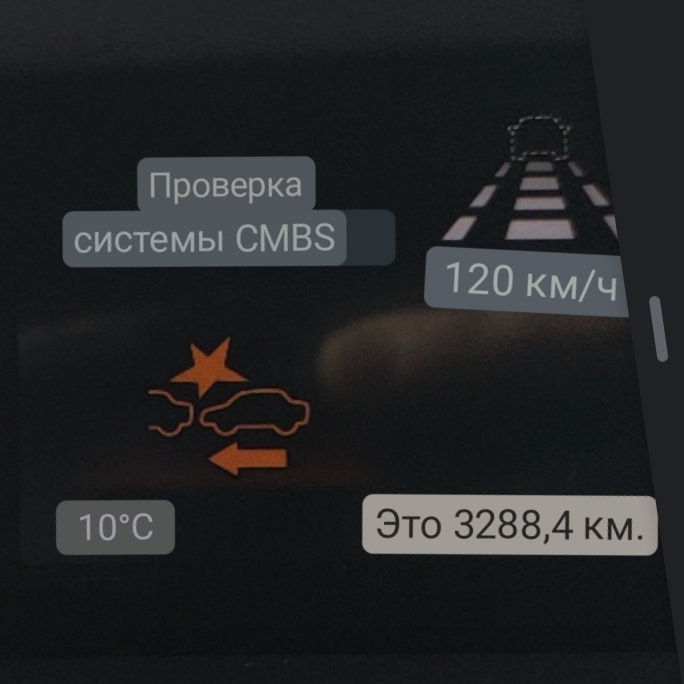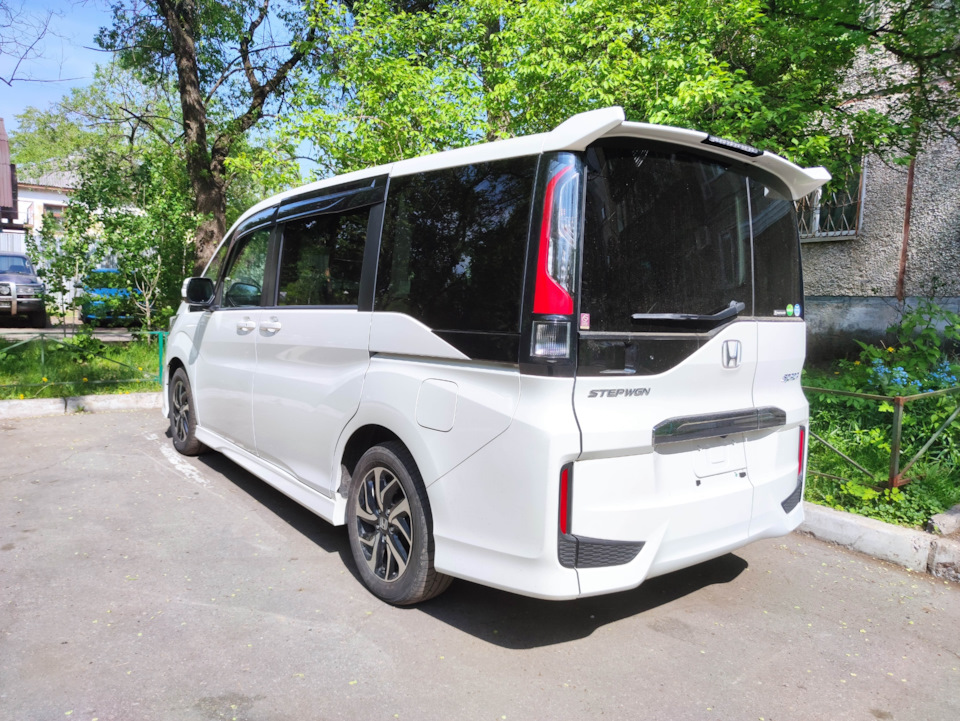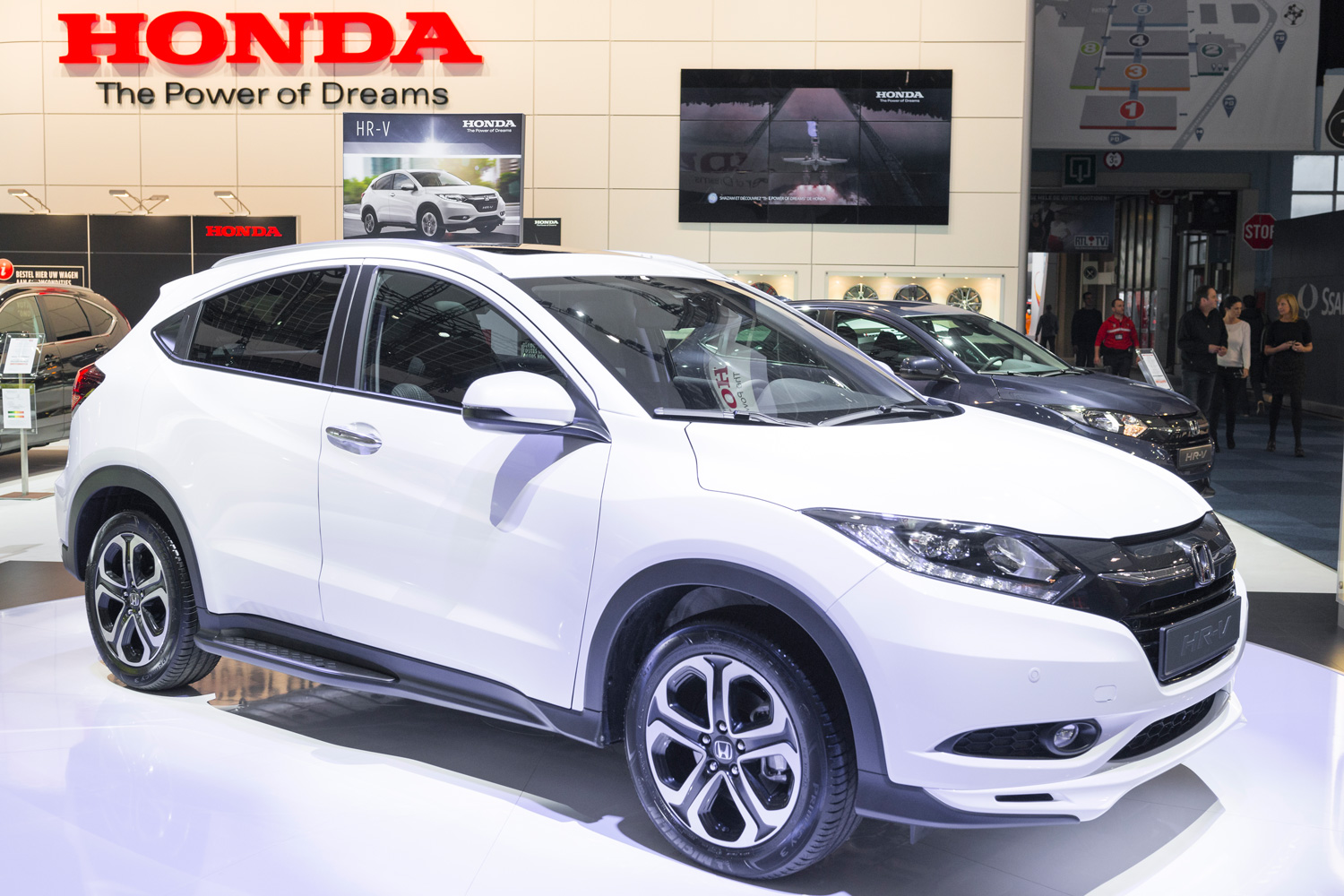Еду сейчас по маршруту Владивосток — Москва. Гоню ещё одного такого Стэпа. И вот на 3-ей тысяче километров пути выскочило такое сообщение.
Ошибок по блокам никаких нет, проверил ELM-кой. Все системы работают в штатном режиме. Круиз не тупит.
Что означает это сообщение? Может подскажет кто?
Лобовое стекло и значёк «Н» на решётке радиатора затянул в бронепленку, чтобы защитить от камней на время перегона. Может в этом причина?
————————————————————-
Решение найдено! Была произведена калибровка радара. Причиной сбоя стала бронепленка.
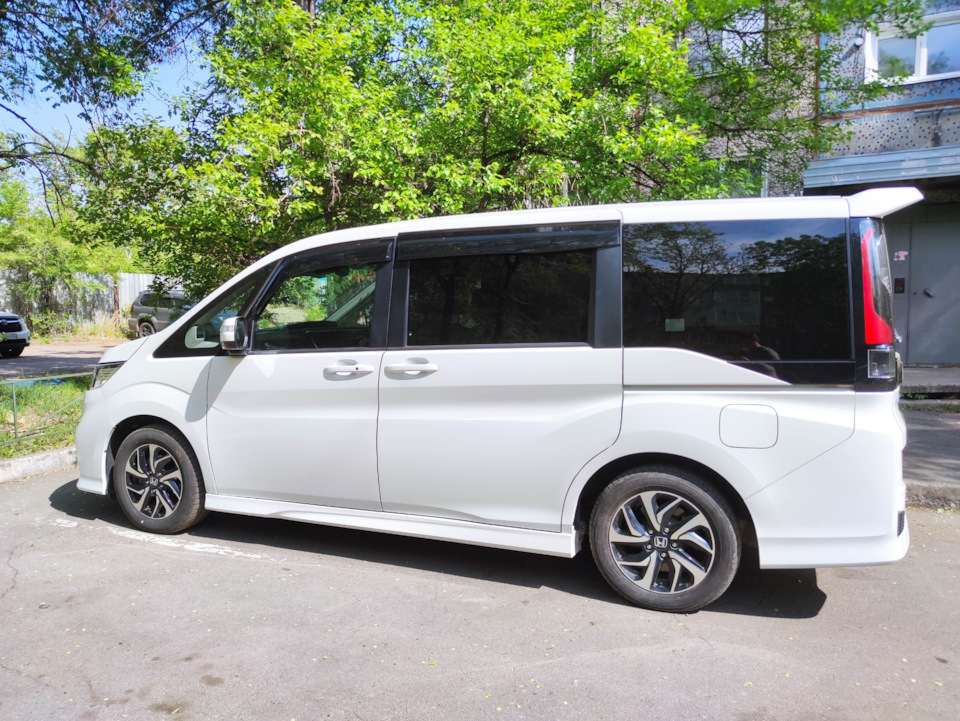
Как определить неисправность по коду DTC
Проверьте и сотрите коды неисправности DTC с помощью HDS.
ПРИМЕЧАНИЕ: Когда индикаторы АСС и CMBS загораются, сначала выполните поиск неисправностей системы АСС (кроме кода DTC 100).
Перед поиском неисправностей проверьте и запишите следующее:
-
Спросите клиента, при каких условиях проявилась неисправность, и при поиске неисправности попытайтесь воспроизвести те же самые условия.
-
Если во время пробного заезда симптом не появился, и индикатор CMBS не загорелся, но поиск неисправностей выполнен, на основании DTC, проверьте качество контактов или крепления клемм на всех разъемах, связанных с цепью, в которой вы выполняли поиск неисправности.
-
После поиска неисправностей или после ремонта очистите коды DTC и проведите проверочную поездку в тех же условиях, при которых появились DTC.
-
Система адаптивного круиз-контроля (ACC) и CMBS иногда останавливает управление из-за условий окружающей среды (погода, состояние дороги, состояние управления и т.д.). В таких случаях могут храниться коды DTC.
Коды DTC могут храниться, даже если система в порядке:
DTC 88: Индикатор АСС не загорается, индикатор CMBS загорается
Блок радара миллиметровых волн перегревается, напряжение подачи питания на блок радара миллиметровых волн понижено или появилась ошибка соединения между блоком АСС и блоком радара миллиметровых волн.
DTC 95: Индикатор АСС не загорается, индикатор CMBS загорается
Чрезмерно высокое напряжение аккумулятора.
DTC 96: Индикатор АСС не загорается, индикатор CMBS загорается
Чрезмерно низкое напряжение аккумулятора.
DTC 97: Индикатор АСС не загорается, индикатор CMBS загорается
Чрезмерное движение по дороге с неровным покрытием или зажигание находится в положении ON (II)/OFF.
DTC 102: Индикатор АСС не загорается, индикатор CMBS загорается
Не полностью отпущен стояночный тормоз или движение с застрявшим стояночным тормозом.
How to Troubleshoot the Collision Mitigation Braking System (CMBS)
CMBS Indicator (Amber)
When the CMBS detects a problem while operating, the CMBS stops working, then the CMBS indicator and the brake system indicator (amber) stay on.
NOTE:
|
|
The ACC indicator indicates problems related with the ACC system and the CMBS. |
|
|
When there is trouble to influence only a CMBS function, the ACC indicator does not come on, and only a CMBS indicator comes on. |
|
|
The CMBS communicates with the PCM, the EPS control unit, the VSA system, the steering angle sensor, and the gauge control module via F-CAN. If a connected unit malfunctions, the CMBS will not work. In this case, both the CMBS indicator and the connected unit indicator come on and stay on (except for the gauge control module). |
Self-Diagnostic Function
When a problem is detected by the self-diagnostic function, the CMBS stops working, turns on the CMBS indicator, indicates the problem on the MID, and stores the DTC.
Dirt or Dust Detective Function (RADAR OBSTRUCTED Indication)
If the message RADAR OBSTRUCTED appears on the MID, the millimeter wave radar or the radar cover has enough dirt so that the millimeter wave radar is obstructed. The ACC system stops working.
Clean any dirt or contamination on the millimeter wave radar or the radar cover. Once the millimeter wave radar is unobstructed, the MID turns off and the ACC system automatically turns back to ON.
Dirt or dust detective function (CLEAN FRONT WINDSHIELD Indication)
If the message CLEAN FRONT WINDSHIELD appears on the MID, the camera lens or the windshield has enough dirt so that the camera view is obstructed. The CMBS system stops working.
Clean any dirt or contamination on the camera lens or the windshield. Once the camera’s view is unobstructed, the MID turns off and the CMBS system automatically turns back to ON.
System Protect Function (High temperature) (MULTIPURPOSE CAMERA HOT Indication)
If the message MULTIPURPOSE CAMERA HOT appears on the MID, the CMBS system stops working. The multipurpose camera unit temperature is too hot.
When the multipurpose camera temperature cools down to its proper operating temperature, the indicator on the MID turns off, and the CMBS automatically resumes operation.
Multipurpose Camera Unit
The multipurpose camera unit controls the brakes and the various driver warnings when the system recognizes the possibility of a collision.
The multipurpose camera unit has a self-diagnostic function. If the system detects a problem, it disables the CMBS, and turns on the CMBS indicator.
Multipurpose Camera Aiming Function
If the multipurpose camera unit is removed or replaced, you must do the multipurpose camera aiming procedure. If the aiming is incomplete, the CMBS indicator blinks.
Millimeter Wave Radar
The millimeter wave radar calculates the distance between the moving vehicle ahead and your vehicle, and detects the two vehicle’s speed differential.
The multipurpose camera unit receives this information from the millimeter wave radar.
The millimeter wave radar also has an error detection function, and it sends a signal to the multipurpose camera unit if an error is detected.
Millimeter Wave Radar Aiming
If the millimeter wave radar is removed or replaced, you must do the millimeter wave radar aiming procedure, otherwise the ACC indicator (amber) comes on.
Head Up Warning Unit
When a warning signal is sent from the multipurpose camera unit to the gauge control module because the driver is approaching the vehicle ahead, the gauge control module drives the head up warning unit. The head up warning unit flashes to warn the driver about the vehicle ahead.
CMBS OFF Switch
Press and hold the CMBS OFF switch for at least 1 second to turn the CMBS off and on.
CMBS Indication
|
|
When the CMBS system is OK, the CMBS indicator comes on for about 5 seconds then go off after turning the vehicle to the ON mode. |
|
|
When you set the CMBS to OFF, the multipurpose camera unit turns on the CMBS indicator. |
|
|
When the system is activated, the MID displays a warning indicator and a warning buzzer sounds. |
|
|
If the system stops working because of a problem, the MID indicates the problem. |
How to Troubleshoot DTCs
Check and clear the DTCs with the HDS.
Before troubleshooting, check and note these items:
|
|
Ask the client about the conditions when the problem occurred, and try to reproduce the same conditions for troubleshooting. |
|
|
If the symptom does not appear and the CMBS indicator does not come on while test-driving, but troubleshooting is done based on the DTC, check for poor connections or loose terminals at all connectors related to the circuit that you are troubleshooting. |
|
|
After the troubleshooting or repairs are done, clear the DTCs, and test-drive the vehicle under the same conditions as when the DTC was originally set. Make sure the CMBS indicator does not come on. |
|
|
The ACC system and the CMBS may sometimes stop control because of the environment (weather, road conditions, driving conditions, etc.). A DTC may be stored in these cases. |
There may be auto stop system control codes stored even when the system is OK:
NOTE: The ACC indicator will not come on, but the CMBS indicator comes on when the following codes are stored.
Code 88: Millimeter Wave Radar Out of Detection Condition
The millimeter wave radar overheats, the power supply voltage for the millimeter wave radar is low, or there is a communication error between the multipurpose camera unit and the millimeter wave radar.
Code 95: Power Supply Voltage Too High
The power supply voltage for the multipurpose camera unit is 16.8 V or more.
Code 96: Power Supply Voltage Too Low
The power supply voltage for the multipurpose camera unit is 9.5 V or less.
Code 97: CMBS Offset Cancel Timeout
Extensive driving on a rough road or turning the vehicle to the OFF (LOCK) mode when the vehicle is driving.
Code 102: CMBS (CMS) Parking Brake Incomplete Releasing
The parking brake not fully released, or driving with the parking brake stuck.
Intermittent Failures
The term «intermittent failure» means a system may have had a failure, but it checks OK now. If you cannot reproduce the condition, check for loose connections and terminals. Also check ground and power connections related to the circuit that you are troubleshooting.
How to Retrieve DTCs
NOTE: Make sure the 12 volt battery is fully charged before you begin.
|
1. |
Turn the vehicle to the OFF (LOCK) mode. |
|
2. |
Connect the HDS (Honda Diagnostic System) to the data link connector (DLC) (A) located under the driver’s side of the dashboard. |
|
3. |
Turn the vehicle to the ON mode. |
|
5. |
Use the HDS to check for CMBS for DTCs. |
|
6. |
Read and record the DTC.
|
|
7. |
Turn the vehicle to the OFF (LOCK) mode. |
|
8. |
Disconnect the HDS from the DLC. |
|
9. |
Do the troubleshooting procedure for the DTC. |
How to Clear DTCs
NOTE: Make sure the 12 volt battery is fully charged before you begin.
|
1. |
Turn the vehicle to the OFF (LOCK) mode. |
|
2. |
Connect the HDS (Honda Diagnostic System) to the data link connector (DLC) (A) located under the driver’s side of the dashboard. |
|
3. |
Turn the vehicle to the ON mode. |
|
5. |
In the DRIVING SUPPORT MENU of the HDS, select Integrated Driver Support System, then DTCs choose the clear DTCs icon, and follow the prompts. |
|
6. |
Turn the vehicle to the OFF (LOCK) mode. |
|
7. |
Disconnect the HDS from the DLC. |
Honda CMBS FAQ
WHAT VEHICLES HAVE PROBLEMS WITH HONDA’S CMBS?
The following vehicles may be equipped with Collision Mitigation Braking System problems and experience recurring Honda brake system problems: 2016–2020 Accord, 2016–2020 CR-V (EX, EL and Touring), and 2016–2020 Pilot.
Some of these vehicles may be included in one or more class action lawsuits. Nonetheless, Honda models that are not currently represented in class action lawsuits may still face a recurring CMBS problem. You need to opt out of class action lawsuits before established deadlines to pursue a lemon law claim.
WHAT’S WRONG WITH HONDA’S CMBS?
According to multiple class action lawsuits, a Honda Collision Mitigation System problem can in fact cause various issues. These problems include random engagement of the brakes, sudden deceleration, and shuddering and jerking of the vehicles. The lawsuits against Honda allege that other driver assistance systems in the Honda Sensing technology suite cause recurring safety problems in multiple models. Another example; Honda’s CMBS is another driver assistance system in question.
Supposedly, The CMBS provides false alerts for obstacles that are not present. Some Honda owners and lessees state that their vehicles’ CMBS mistakenly reports opposing traffic as obstacles, all while failing to detect actual obstacles. According to these lawsuits, the CMBS’ function can be affected by roadway conditions. Specifically, conditions may include weather, sudden changes in light, shadows, time of day, and roadway objects mistaken for pedestrians or vehicles.
Other systems on the Honda Sensing technology suite allegedly cause false lane keeping alerts that can cause driver distraction and make driving unsafe. Overall, recurring Honda Sensing problems – in particular, Honda CMBS problems – may turn your vehicle into a lemon. Therefore, contact a lemon law attorney to discuss your legal rights.
HOW DOES THE HONDA CMBS WORK?
Honda’s Collision Mitigation Braking System is an autonomous emergency braking system that incorporates features of the Forward Collision Warning (FCW). Part of the Honda Sensing, the FCW’s design supposedly improves driver safety and prevents collisions. These systems rely on radar sensors near the lower front bumper, an interior camera, and other safety technologies.
By detecting possible obstacles, Honda’s Forward Collision Warning System prevents possible frontal collisions. Upon detection, the Honda FCW provides the driver with visual and audible warnings. If a driver ignores these warnings or otherwise cannot respond in time, the Honda CMBS will continue these alerts. Simultaneously, the system will apply light braking and, if a collision is unavoidable, apply hard braking to lessen the impact of a crash.
Other technologies included in Honda Sensing include:
- Road Departure Mitigation System (RDM)
- Adaptive Cruise Control (ACC) with Low-Speed Follow
- Lane Keeping Assist System (LKAS)
These systems are supposed to help control vehicle speed, provide steering inputs, and alert drivers if they are at risk of crossing into adjacent lanes.
However, the Sensing technologies do not always work as intended. As a result, the Honda brake system problem may make the vehicle unsafe to drive. At this time, your Honda Accord, Honda CR-V, Honda Pilot and other Honda vehicles can be affected.
HOW HAS HONDA RESPONDED?
Honda knew of problems with its CMBS since at least November 2013, after a report of CMBS activation resulting in a vehicle getting rear-ended. Upon investigation, Honda issued a safety recall of several 2014–2015 Honda models equipped with Honda Sensing.
That same year, the National Transportation Safety Board released a special investigation report that predicted potential problems in autonomous emergency braking systems. The report found that these systems depend heavily on the technology’s timeliness and detection accuracy, and a risk of false alarms. Because of this, class action lawsuits allege that Honda knew of the risks of having a faulty collision avoidance system. However, Honda allegedly continued to sell vehicles equipped with defective Honda Sensing suites.
These lawsuits cite documents from 2016 to 2018, which reveal Honda’s knowledge of sudden braking, loss of speed, shuddering/jerking and other problems allegedly caused by the Honda CMBS. Honda initially attributed the Honda Sensing problems to issues with the radars, instructing dealers to re-aim the radars in affected vehicles. Evidently, Honda later told dealers to “always remember” that various driving and weather conditions will interfere with Honda Sensing technologies.
Honda allegedly offers no solutions to drivers and technicians who report recurring problems with vehicles equipped with Honda Sensing.
IS MY HONDA A LEMON?
Honda’s CMBS may have turned your vehicle into a lemon if your vehicle shows the following problems:
- Sudden and Unexpected Braking
- False Obstruction Alerts
- Lane Keeping False Alerts
- Unexpected Highway Speed Fluctuation
Recurring problems with your Honda’s Collision Mitigation Braking System can make your vehicle unsafe to drive. If Honda or an authorized repair shop cannot fix your vehicle within a reasonable number of attempts, your vehicle may be a lemon.
The number of repair attempts considered “reasonable” can differ on a case-by-case basis. Consult a California lemon law attorney about your situation and legal rights. If you are included in one or more class action lawsuits, you may need to opt out before certain deadlines to retain your individual right to sue.
HOW DO I OPT OUT OF A
CLASS ACTION LAW SUIT?
Those represented by one or more class action lawsuits may opt out and take an individual lemon law case against Honda, in which you could potentially recover a far more substantial cash settlement. You may need to opt out before a certain deadline to retain your individual right to pursue a lemon law claim if you are included in at least one lawsuit.
Once you opt out, you may pursue charges more specific to your situation. Contact a California lemon law attorney if you experience Honda brake system problems and want to learn about your individual right to pursue a lemon law claim.
Get Lemon Law help by Knight Law Group today!
Get A Free Case Review

The Honda Sensing is a revolutionary system designed to keep you safe on the road. It includes several sensors that point out potential problems or dangers so that you can avoid them. If your Honda’s sensing system stops working, your safety and that of your passengers and other road users can be jeopardized. So, what do you do when you are in this type of situation? Honda experts gave us the following information.
When the sensing system in your Honda malfunctions; try resetting the sensor before taking it to your auto-mechanic. The recommended process is as follows:
Press and hold the main sensing system button to disable all the sensor features. Press it again to restore all the features.
But, if you only want to reset certain features of the sensing system, press the particular button until the sign appears on the instrumental panel. Then, press and hold the same button once more to reset it.
Can you reset individual sensor features? Keep reading to learn more about this, as we also explain how to reset the sensing system as a whole. In addition, learn why your sensing system has failed, and how much it costs to repair it.
How Do You Reset The Honda Sensing?
If your sensing system is malfunctioning, it could be due to various reasons, which we shall tackle later in this post. However, before panicking and calling your mechanic, try resetting the system by pressing and holding for a few seconds.
The whole sensing system will shut down. Wait, for a few seconds, then press and hold it to turn it back on.
If it is only one particular sensor failing, you can reset it on its own.
The following are some sensing functions of your Honda, how they work, and how to reset them:
Collision Mitigation Braking System
The collision mitigation brake system (CMBS) assists you to avoid colliding with another car. It does this by automatically applying brakes to stop your car.
When you are about to hit another car, the brake lights turn on and let out a constant beeping sound.
However, the warnings will not come on if you swerve off on time, and the difference in speed between your car and the other one is less than 10 mph.
How To Reset The CMBS
Press the CMBS off switch for about one second, which will produce a beeping sound. A CMBS OFF message will appear.
Turn back on the system by pressing the switch for one second, and the CMBS light will come on.
When the CHECK CMBS SYSTEM message appears on the display, it is a sign there is a problem with the CMBS system. Has your system been checked by your dealer?
Road Departure Mitigation System
This system helps you to drive within the lane markings. If you get too close to the markings, or you are almost leaving the road altogether, the system will vibrate your steering wheel.
Lane Departure message will appear on the dashboard. And, if it senses that you have not steered back properly into your lane, the system will automatically apply brakes.
To reset the system; press the support safety switch. Roll the selector wheel until the RDM symbol comes on and push it.
The check mark symbol next to the RDM mark will change from green to gray, indicating the system is off. Use the same procedure to turn it back on.
Below is a video that shows how you can customize the RDM system and how to reset it:
The Adaptive Cruise Control
Your Honda’s Adaptive Cruise Control is designed to help you maintain a safe distance from the car in front of you, especially in heavy traffic. It makes use of a radar unit placed on the front bumper and a windshield-mounted camera that detects how far away the car in front of you is.
Your Honda will then set up a suitable throttle position to maintain the predetermined distance between your vehicle and the car in front of you, as well as apply brakes if you happen to get too close.
To reset the ACC system of your car, press and hold down the button for one second. It is symbolized by a vehicle with three or four bars behind it.
The Cruise Mode Selected message will appear on your dashboard. Press and hold the interval button once more to reset the ACC feature.
Below is a video that shows you how the ACC system works:
The Blind Spot Information
The Blind Spot Information system (BSI) of your Honda detects the areas difficult to see as you drive. When your car detects another one in a spot difficult to see, a red or yellow indicator lights up in your side mirrors, or on the window frame.
It also has a warning sound. This system helps you prevent crashing in blind spot areas. This system is helpful when you are passing another car, your car is being passed, or you are preparing to change lanes.
This sensor is located on your rear bumper. To reset it, check if it is covered in dirt, mud, or debris. If it is dirty, clean it. Next, turn off your engine and wait for a few seconds. Turn it back on. Your blind spot system will reboot and reset. If this does not work, take it to your mechanic.
You could also reset it by pressing the safety support switch. Afterward, rotate the selector wheel until the BSI symbols are turned on.
Press it, and a check system will turn from green to gray. To switch it back on, follow the same procedure that you used to turn it off.
Below is a video that shows how the BSI system works and how to reset it:
Some Of The Common Causes Of Your Honda Sensing Not Working
Your sensors can refuse to work due to several reasons, some of which include:
Sensing System Is Off
This is the first thing you should check before you go deeper into what could be making your sensors not work. If it is off, turn it back on.
Unclean And Obstructed Sensors
Mud, snow, and other debris can cause your sensors to be dirty, thus obstructing them. You can still drive your car, but you will not benefit from these added features in the car.
You can clean the camera on your windshield by running the wipers or scraping ice off using an ice scraper. Don’t forget to clean the area around your radar. Find the location of your car, which is dependent on your model.
For example, if you have a Honda Accord, you will find the radar in the middle of the lower bumper. If you drive a Honda HR-V, locate it at the front fascia on the passenger side.
Bad Weather
The sensors may be affected by fog, snow, or rain as you drive. The sensing features may not work. For example, your car may not detect the car ahead when it’s foggy.
Condition Of The Road
Some road conditions can interfere with the proper collection of data. For example, the sensors may not be able to detect a lane as you drive on a winding road.
Speed
These sensors work at certain speeds. For example, as seen earlier, the collision mitigation brake system will not come on if you are driving less than 10 mph.
Another example is that for the Road Departure system to work, you should drive at a speed between 45 mph and 90mph.
Cost Of Repairing The Sensing System Of Your Honda
Any part of your sensing system can fail. Due to the technology used, and the materials used to put it together, it might be better to replace a malfunctioned sensor.
To begin with, if your Honda does not have a sensing system, you can upgrade at a cost of $1,000. Unlike the older models, most of the newer models have embraced Sensing Technology for added safety.
Replacing a radar sensor in your rear bumper, like that used for blind-spot monitoring, will cost you between $850 and $2,050. Your front radar sensor behind the grille will cost between $900 and $1,300.
In Closing
The sensing system may appear complicated, but it is a network of sensors that ensures your car is working optimally while keeping you safe on the road.
This system can fail due to several reasons, some due to natural causes such as rain, snow, or fog. Other reasons include your car being dirty or being obstructed by debris.
You can troubleshoot by resetting it, but if the system still fails, take it to your auto-mechanic.
Thank you for reading this post and you are welcome to read our previous posts by clicking the links below:
What Sensors Cause Car Not To Start
Backup Sensors Not Working

